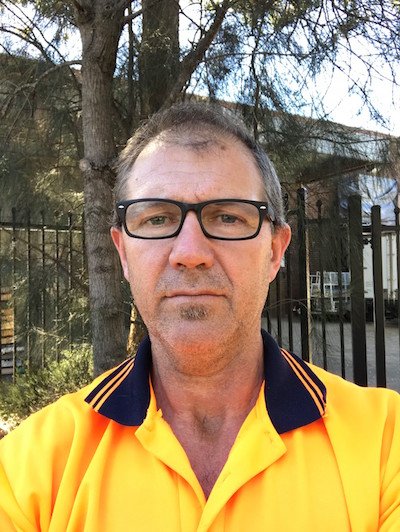News
23 Mar 2018
Hearing Augmentation, Technology, and The Law

Subscribe to CX E-News
INSTALLATION
Hearing Augmentation, Technology, and The Law
Hearing Augmentation Systems are a vital public service, and a legal requirement in many public spaces as defined in the Building Code of Australia. Their provision is mandatory in many public spaces that have installed PA systems, including educational institutions, places of business, auditoria, rooms used for legal proceedings, and some reception areas. Sydney’s The P.A. People have been delivering hearing augmentation systems for over twenty years and talked with CX about requirements, tech, traps, and tricks …
Three differing technologies can be used to provide hearing augmentation, and each have their own advantages and drawbacks that need to be taken into account in the design stage,” said Brett Steele, Manager – Installed Systems, at The P.A. People.

Brett Steele, Manager – Installed Systems, The P.A. People
“The most common is the Audio Frequency Induction Loop (AFIL), where wiring is laid into the floor or ceiling, that broadcasts a feed of the PA directly to hearing aids fitted with a ‘T’ switch. AFILs are commonly found in train stations, theatres, lecture halls, meeting rooms, and any other public space where it’s possible to lay the cable during new construction, or during a retrofit.”
“From the venue’s (and our) point of view, AFILs are ideal as they require little ongoing maintenance or staff attention,” continued Brett. “The patron experience is also excellent, as they are already carrying the device they need to access the broadcast and it can be heard from almost anywhere in the loop area in the venue’s floorplan.
“In fact, the Building Code of Australia specifies that any AFIL must cover 80% of the space that it is installed in. However, AFILs are not suited to every application – they aren’t suitable in some spaces built with large amounts of metal, don’t provide security from unauthorised access, and can be uneconomical to install in extremely large venues such as stadia.”
HORSES FOR COURSES
Where an AFIL isn’t a practicality, a broadcast system is commonly installed. Two technologies currently dominate in this space, infra-red and FM radio, but recent developments have started to see new products using WiFi and DECT (the bandwidth used by cordless phones) come onto the market. Time will tell if these new products succeed in practical applications.
 “We’ll install Infra-red in small spaces such as meeting rooms, but they require the user to wear a receiving device and be in line-of-sight of the transmitter,” Brett explained. “Unlike an AFIL, an infra-red system offers excellent privacy in confidential applications, as it can’t bleed through a wall or floor into another space.
“We’ll install Infra-red in small spaces such as meeting rooms, but they require the user to wear a receiving device and be in line-of-sight of the transmitter,” Brett explained. “Unlike an AFIL, an infra-red system offers excellent privacy in confidential applications, as it can’t bleed through a wall or floor into another space.
“In larger spaces, like a sports ground, a low-powered FM transmitter can broadcast cheaply and efficiently to a crowd, but the venue must provide and maintain a minimum number of receiving devices for the patrons, which can be costly. Both infra-red and FM solutions can be a burden to both the venue and patron; the patron must physically collect and return the receiving device and must be comfortable with wearing it. The venue must keep batteries charged and the receivers in service, as well as staff the collection points.”
TIPS FOR YOUNG PLAYERS
Having custom engineered solutions for airports, train stations, ferry terminals, theatres, churches, civic buildings, and corporate offices, The P.A. People have had just about every hearing augmentation curve-ball thrown at them. Here’s a few tips and tricks from their extensive experience:
Heavy Metal: Barangaroo Ferry Wharf

Sydney’s Barangaroo Ferry wharves are 48 metres long and 23 metres wide and can berth eight ferries at full capacity. The P.A. People installed a large-scale induction loop system that covers 25 meters by 18 meters of the structure, as well as individual one metre by one metre loops that cover Help and Information points.
“It’s an elaborate induction loop,” said The P.A People Project Manager Ross Ford. “Installing an AFIL on steel has been considered to be detrimental to performance, but we have found that if you properly insulate the loop from the deck, it works extremely well.
“A lot of the hesitation about installing AFILs on steel comes from working with reinforced concrete slabs, where the steel reinforcement is a grid of bars which can cause changes in EQ performance of the system. We’ve found that because of the construction format of the pontoons at Barangaroo, it didn’t cause a problem on that site.”
Serious Heritage: Drama Theatre, Sydney Opera House

The Drama Theatre is the smaller of the Opera House’s two proscenium arch theatres, and seats up to 544 in a raked auditorium. “Working in an iconic venue like the Sydney Opera House is complicated because of the mechanics of the building,” Ross Ford explained.

Ross Ford – Project Manager The P.A People
“The Opera House necessarily has rules and regulations to ensure work that is carried out there stays within their guidelines. The Drama Theatre needed a phased array induction loop which had to be installed in the corners of the steps down the aisles.
“Every second row, we crossed the cable across the aisle, come down three rows, then ran the cable back across the aisle. We needed to do this underneath the existing carpeting, which needed to go back in place as if nothing had happened.
“That’s the kind of issue you have to take into consideration when dealing with these kindsof buildings. You need to approach it with the right attitude to get a good result. The reports back are that the new loop works incredibly well.”
Retrofitting Regime: Sydney Airport Terminal One

T1 at Sydney Airport services all inbound and outbound international flights. Like any modern airport, it’s a complex space incorporating shopping, dining, and airline lounges along with the gates. As such, The P.A. People are currently working to install 120 induction loops through all of its public spaces.
“T1 is a good example of challenges you face when retrofitting an induction loop,” observed Brett Steele. “There’s a lot that can’t be seen until you take up the existing floor coverings. This means you think on your feet and modify designs to suit the environment, and that’s done on an almost daily basis.
“For example, you can’t install an induction loop cable over an expansion joint, as it will either stretch or crush the cable as it expands and contracts. T1 is a large phased project that we’re working on with the builders, electricians, and floor tilers. We’re typically working on each area in halves, as we can’t block off an entire public area at once. We’ll do one side of a gate one day, then swap and do the other side the next, before we test and commission.”
This article first appeared in the print edition of CX Magazine March 2018, pp.22-25. CX Magazine is Australia and New Zealand’s only publication dedicated to entertainment technology news and issues. Read all editions for free or search our archive www.cxnetwork.com.au
Subscribe
Published monthly since 1991, our famous AV industry magazine is free for download or pay for print. Subscribers also receive CX News, our free weekly email with the latest industry news and jobs.







